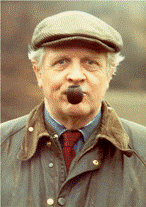
Mary Hughes (nee Lewis)

The "Hopper" Kinmel Hall

William Lewis Hughes
1st Baron Dinorben
The Estate has existed in its current form since the Sixteenth Century, following the marriage of Piers Holland I and Catherine Lloyd, thus uniting the key areas of the Estate and creating its nucleus. Following a period of great instability and a succession of different owners, it was bought in 1786 by Rev. Edward Hughes, the five-times great-grandfather of the present owner. The family money had come when Edward, a young curate in Anglesey, fell in love with Mary Lewis, the daughter of his employer, the Rector of Trefdraeth. She had been left on the death of her uncle the house of Llysdulas on Anglesey, along with a “barren hill” nearby. This hill was what is now known as Parys Mountain, the great copper mine owned by Edward Hughes and Sir Nicholas Bayly (ancestor of the Marquess of Anglesey who owned the other side of the hill). At its zenith the mine employed 1,500 miners and the Hugheses and the Baylys divided upwards of £300,000 a year, a huge amount of money at the turn of the nineteenth century. Through this Edward Hughes built up a prodigious landed Estate, the jewel of which was the purchase of Kinmel in 1786.
Edward Hughes was succeeded on his death in 1815 by his eldest son, William Lewis Hughes, MP for Wallingford and created Baron Dinorben of Kinmel in 1831. He was a well-respected member of society, being ADC to Queen Victoria, Colonel of the Anglesey Militia and champion of the poor, founding a free school for local girls in the park in 1830. On his death in 1852, he was succeeded by his younger and only surviving son, William Lewis Hughes, second Lord Dinorben. However, the second Lord was invalided and unmarried, and died with no children only eight months after his father’s death, leaving the title extinct. The Estate then passed to the first Lord’s nephew, Hugh Robert Hughes, affectionately known as “HRH”; a reflection of not just his initials, but also of his grand lifestyle and affectations. “HRH” embarked upon a massive building programme on the Estate using mainly the famed architect William Eden Nesfield culminating in the enormous “Nesfield” Kinmel Hall, built 1871-76 on the same site of two previous houses, most recently the Georgian Palladian “Hopper” Kinmel. It was built with 52 main bedrooms and quarters for 60 live-in servants and a room used only for ironing the newspapers. Although the family ceased to live there in 1929, it still occupies a prominent situation in the Park, and serves as a reminder of Victorian splendour and excess. The flamboyance of “HRH” proved the adage of “one generation to start an Estate, one to consolidate it and a third to lose it”. At the first Lord Dinorben’s death, the Estates were among the most extensive in Wales, accounting for some 85,000 acres of North Wales, with properties in Anglesey, Caernarfonshire, Denbighshire and Flintshire, along with a Town House in Mayfair. The combination of double death duties following the Lords Dinorben and “HRH” ’s lifestyle resulted in a much diminished Estate at his death in 1911. He was succeeded by his younger son, Colonel Henry B.L. Hughes, the eldest son (Hugh S.B. Hughes) having been disinherited following an affair and subsequent marriage to an actress which did not meet with the heavily Victorian family’s approval. Col. Hughes, being a career soldier as a younger son, died in 1940 a bachelor and childless, leaving the Estate to his sister’s grandson, Major David Fetherstonhaugh. Maj. Fetherstonhaugh died in 1994, leaving the Estate to his grandson, Dickon Fetherstonhaugh, who remains owner to this day.

Rev. Edward Hughes

The "Nesfield" Kinmel Hall

Maj. David Fetherstonhaugh

